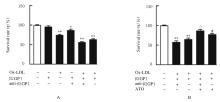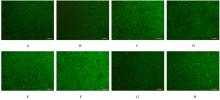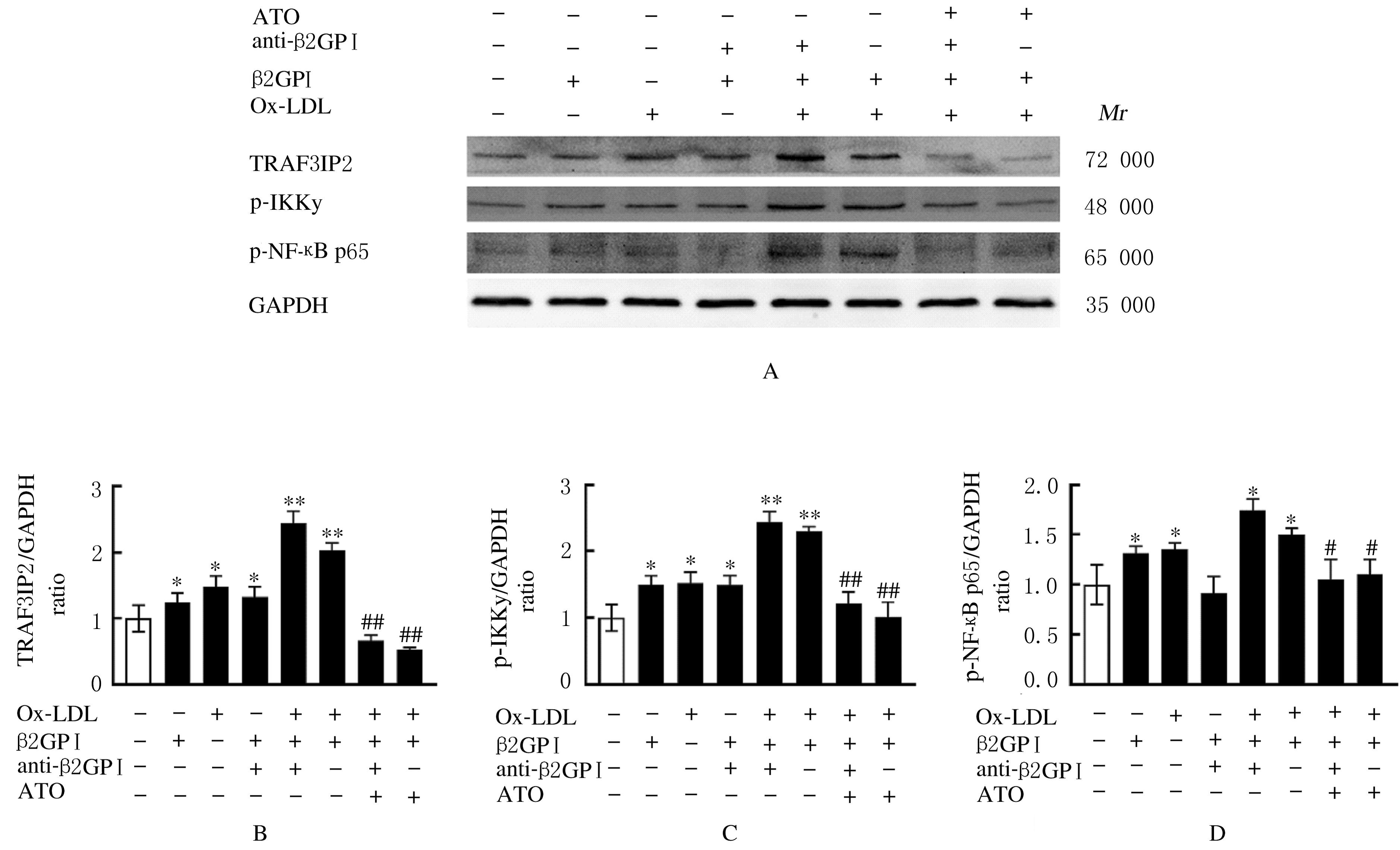| [1] |
Yang ZHOU,Xuguang MI,Wenxing PU,Wentao WANG,Meng JING,Fankai MENG.
Ameliorative effect of melatonin on oxidative stress of human neuroblastoma SHSY5Y cells induced by hydrogen peroxide and its mechanism
[J]. Journal of Jilin University(Medicine Edition), 2022, 48(2): 340-347.
|
| [2] |
Na HAN,Fanping LIU,Yanqing TIAN,Zhiqing ZHENG,Weiming LANG,Qian WANG,Yatao LIU,Jianguang ZHU.
Regulatory effect of miRNA-27a on immune function in experimental pulmonary tuberculosis rats and its mechanism
[J]. Journal of Jilin University(Medicine Edition), 2022, 48(1): 104-110.
|
| [3] |
Dan MAO,Zhishuang LI,Jiaxin CHENG,Ping HOU.
Effect of Shenxianshengmai Oral Liquid on ROS expression in mice with sick sinus syndrome and its regulation on HCN4 ion channel
[J]. Journal of Jilin University(Medicine Edition), 2021, 47(6): 1353-1361.
|
| [4] |
Qin WANG, Chunlin LIN, Zhibin CHENG, Ruofan HE, Penghang LIN, Hui CHEN, Jianxin YE, Guangwei ZHU.
Construction of TRAF6 ubiquitination site mutation vectors and identification of its functional ubiquitination sites
[J]. Journal of Jilin University(Medicine Edition), 2021, 47(3): 551-558.
|
| [5] |
Ying YANG, Wei ZHAO, Dan LYU.
Effect of C19ORF12 on proliferation and chemo-sensitivity of gastric cancer MKN45 cells and its mechanism
[J]. Journal of Jilin University(Medicine Edition), 2021, 47(3): 687-693.
|
| [6] |
ZHANG Cong, LIU Di, ZHANG Hanxue, ZHANG Hao, KONG Fanli, FENG Xianmin.
Protective effect of ginsenoside on hydrogen peroxide-induced HepG2 cell injury
[J]. Journal of Jilin University(Medicine Edition), 2020, 46(05): 985-991.
|
| [7] |
YU Lei, WANG Ce, HAN Bing, LI Xin, HAN Yuchen, SUN Yuying, GUO Xiangshu, LIU Weiwu, WANG Zhicheng.
Enhancement of mitochondria-targeted KillerRed in autophagy caused by radiation in HeLa cells and its mechanism
[J]. Journal of Jilin University(Medicine Edition), 2020, 46(04): 693-698.
|
| [8] |
WEN Qingyi, JIAO Miaomiao, XIE Xiao, PEN Jingyu, DONG Fengge, WEI Xue, YANG Ming.
Inhibitory effect of disulfiram combined with cisplatin on triple negative breast cancer MDA-MB-231 cells and its mechanism
[J]. Journal of Jilin University(Medicine Edition), 2020, 46(03): 523-529.
|
| [9] |
LOU Tingting, HUANG Qingxia, LI Xiangyan, ZHAO Daqing.
Protective effect of ginseng extract on cardiomyocyte injury induced by palmitic acidand its mechanism
[J]. Journal of Jilin University(Medicine Edition), 2019, 45(06): 1248-1255.
|
| [10] |
HEI Lijuan, WANG Juanhong, WEI Wei, FANG Hangrong, DUAN Ying, MA Shifen, XU Junrong.
Detection of interleukin-6 levels in serum and thyroid tissue of patients with papillary thyroid carcinoma and their significances
[J]. Journal of Jilin University(Medicine Edition), 2019, 45(03): 601-605.
|
| [11] |
CHI Ming, GAO Ling, WU Weiwei, ZHANG Boru, WANG Lei.
Improvement effect of berberine on acute lung injury and inflammation induced by lipopolysaccharide and its mechanism
[J]. Journal of Jilin University(Medicine Edition), 2018, 44(06): 1194-1199.
|
| [12] |
LI Xin, MA Yunfei, TANG Geng, WEI Qi, JI Hongchi, TIAN Jiaan, SHEN Yannan, WANG Zhicheng.
Enhancement of ROS induced by mitochondria-targeted KillerRed in proliferation inhibition of radiation on HeLa cells
[J]. Journal of Jilin University Medicine Edition, 2018, 44(04): 718-723.
|
| [13] |
YANG Yi, BAO Kangda, ZHOU Yanbing, YUAN Chao, LI Yong, LIU Xiaoming, XU Jinrui.
Regulation of Wnt5a in apoptosis of human lung adenocarcinoma A549 cells and its mechanism
[J]. Journal of Jilin University Medicine Edition, 2018, 44(02): 229-234.
|
| [14] |
XU Xuemei, HUANG Xiaoxia, JIN Ou, ZHANG Hailin, SHI Hongxue.
Protective effect of epithelial growth factor on oxidative damage of skeletal muscle cells in model rats of oxygen-glucose deprivation
[J]. Journal of Jilin University Medicine Edition, 2018, 44(02): 310-314.
|
| [15] |
WANG Yue, LIU Chang, PIAO Xianji, ZHANG Dongyun, MENG Lingqi, WANG Hao, WANG Jiaru, LUO Yinghua, SUN Hunan, JIN Chenghao.
Induction effect of tetrabromobenzotriazole on apoptosis of human colon cancer SW480 cells and its mechanism
[J]. Journal of Jilin University Medicine Edition, 2017, 43(06): 1148-1154.
|
 )
)











